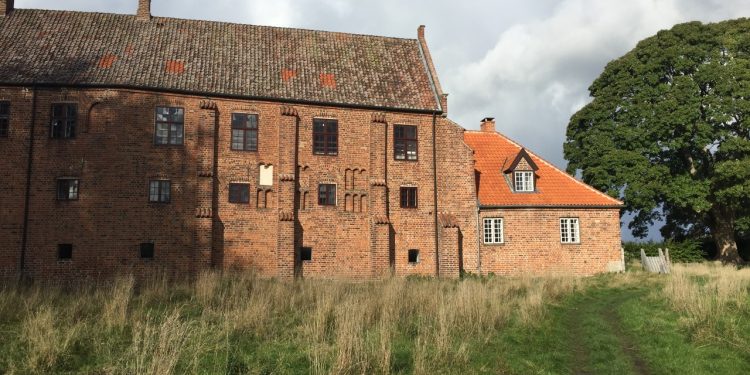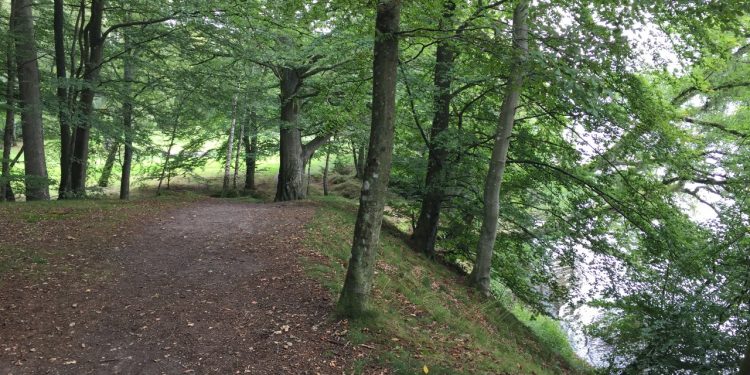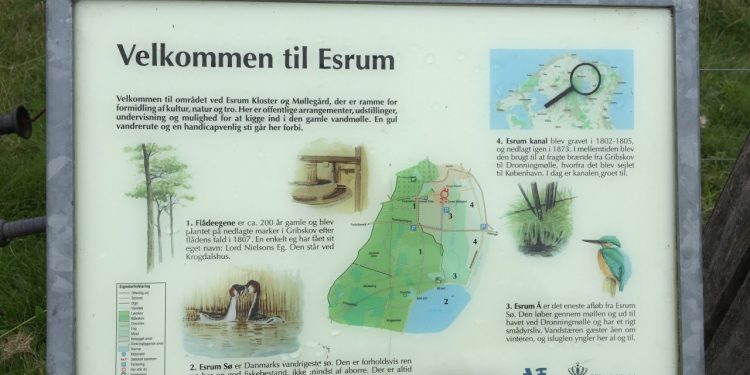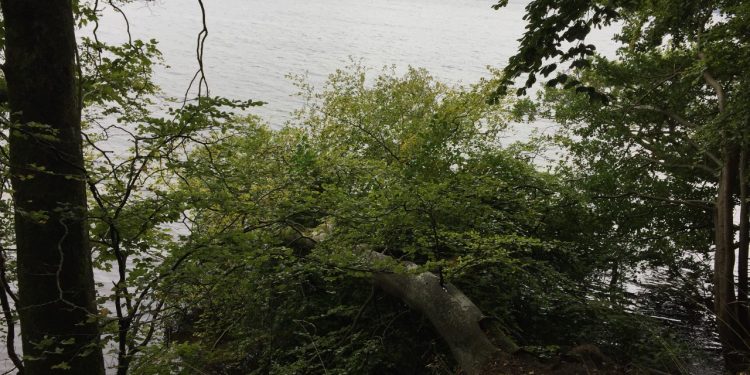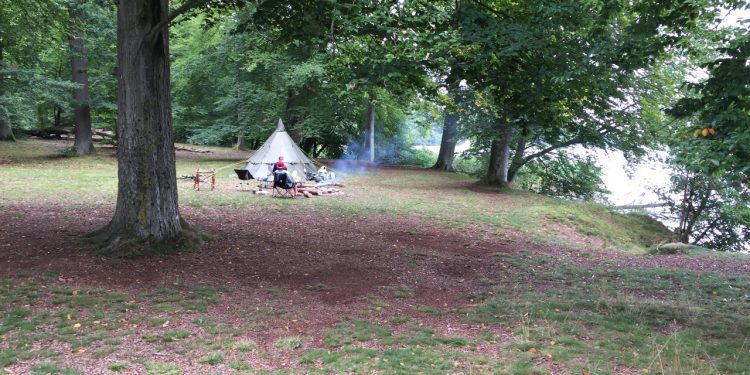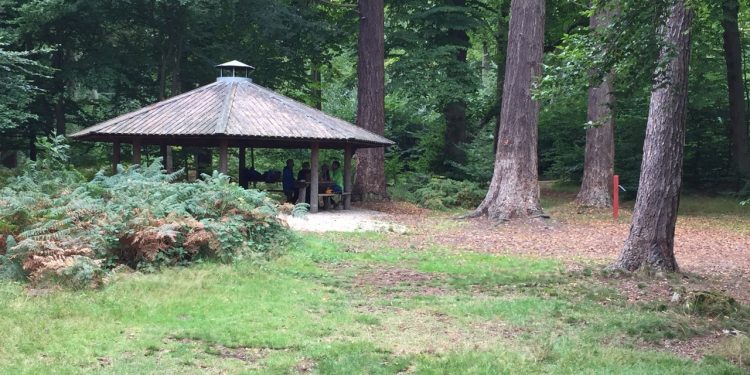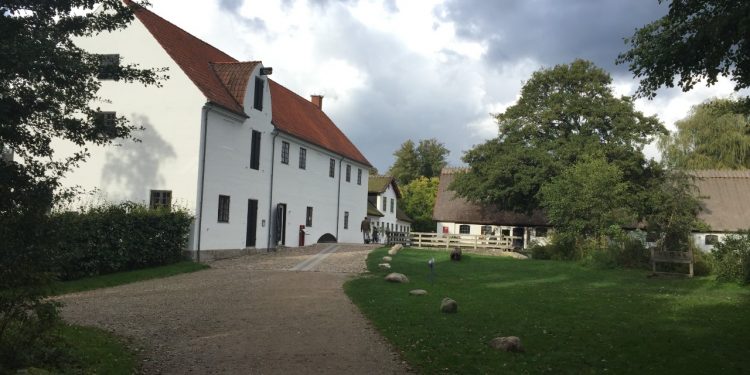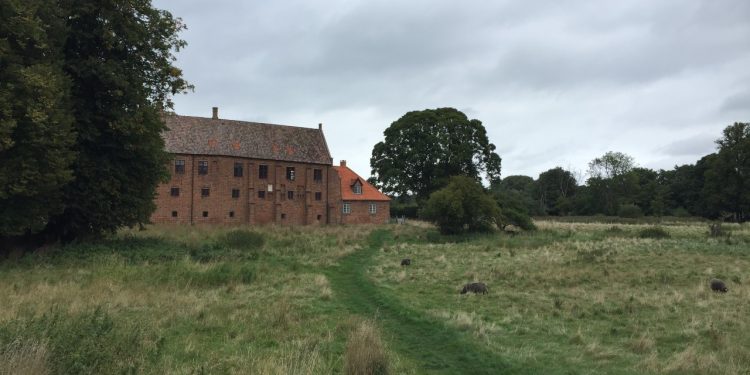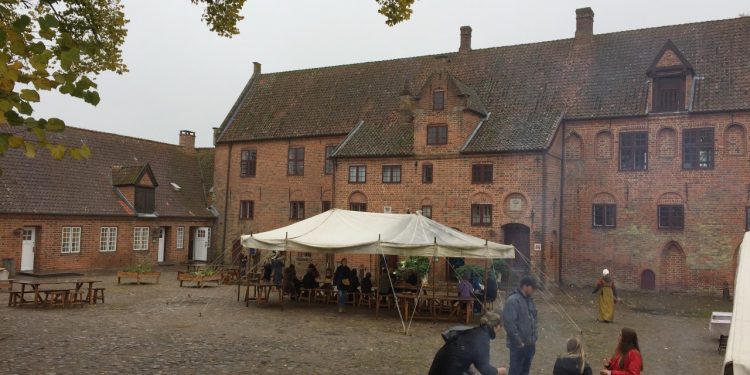Experience Esrum Lake, Gribskov Forest and Esrum Abbey
A magnificent excursion for the whole family is to walk or bicycle along the lake from Nødebo to Esrum Abbey, bring a picnic and enjoy the view while you have your lunch.
The article continues below.
By Bente D.Knudsen
A small gem is the walk along the lake on the opposite shore of the Danish Royal Family’s famous castle at Fredensborg, actually a great trail to bicycle along as well if you are able to bring your bicycle with you.
If not, just walk along the lake until you get tired, even a small walk is worth it. The area was known to Danish philosopher Søren Kierkegaard who said the lake and its shores always brought peace to his mind and soul, in modern jargon we would say it was a mindful experience.
The lake itself is a result of the last Ice Age in Denmark as is the hilly landscape surrounding it, under the water it is shaped rather like a bathtub with steep cliffs along the lake shore and a rather uniform depth of between 18 to 22 meters.
It is the second largest lake in Denmark, 9 km long and up to 3 km wide and a great leisure area as swimming, sailing and fishing in the lake are allowed.
Along the western shore from the small town of Nødebo to Esrum Abbey, the starting point of our excursion trip, you will find the forest Gribskov.
The article continues below.
Gribskov belonged to the Danish King and in 1539, when the abbey at Esrum after the Reformation was transferred to the Danish Crown, King Frederik the Second tore down most of the abbey complex and used it instead as centre for his royal hunting grounds in Gribskov.
Many of the stones were used to build other castles namely Frederiksborg Castle in Hillerød.
The abbey had at this point existed since 1151, when it was founded as a daughter monastery of the order in Clairvaux: during a visit to Denmark by Bernhard of Clairvaux, the Danish Archbishop Eskild gave the Order a piece of land in North Zealand. Until the Reformation, this area of North Zealand was under the personal protection of the Pope.
But back to the excursion. You can start off from Esrum Abbey or from Nødebo. Our suggestion starts from Nødebo.
The article continues below.
If you are driving from Copenhagen, take the road 227 to Nødebo, as you cross through the small town, just as you arrive at the end of the row of houses on both sides of the road, you will see a huge green meadow with views of the lake and the beginning of the forest, the parking is on your right hand side just as the forest begins.
It is just opposite of the Forest School, Skovskolen.
Here you want to take the small path leading down to the lake and not the large one going into the forest. As you walk (or bicycle) along this forest path it will take you right to the shores of the lake from where you have beautiful vistas of the lake and the shores across it on the other side, further along at one point you should even be able to make out the landing bridge of Fredensborg Castle and the castle itself.
Along the path there are a range of shelters where it is possible to make a bonfire if you want to make a stop and no one else is using it (shelters have become immensely popular).
The trees lean out into the lake and here and there you can climb on branches and trees lying along the shore with branches reaching down into the lake.
At some points, the path goes through wet areas and the forest path transforms into wooden bridges leading you dry footed across them.
The article continues below.
The walk is long of course, as the lake is almost 9 km long, so if you get tired, turn back and take your car instead to reach Esrum Abbey.
The road continues through Gribskov and at the end of the forest, signs will lead you to the small village of Esrum, the road is number 205. Stay on the 205 and follow the signs to Esrum Kloster as a new parking area has an easy access from the road and is quite large.
If you took your bicycle all the way, a path will take you along a bend in the lake and then away from the lake and along an old derelict canal, the Esrum canal, not used for centuries and becoming all overgrown but a nice canal to ride along.
It will take you into the village of Esrum from where you can follow signs to the abbey.
For centuries the buildings which survived the Reformation were used for many different things; tax office, orphanage, storage rooms, administrative buildings; this lasted until 1996 when the city of Fredensborg started renovating them.
Esrum Abbey opened to the public in 1997 and since 2000, it has been conjoined with the old mill and restaurant Esrum Millyard. Both are run as independent institutions and attractions.
Esrum Millyard is a delightful small eatery with simple good Danish dishes, they are open Wednesday to Sunday from 10 to 16.00 ( kitchen closes as 15:00).
The article continues below.
You can enjoy a Danish lunch or just have a hot drink with both coffee, tea and hot chocolate on the menu.
The abbey itself has varying exhibitions and often seasonal activities for children. During school holidays such as the autumn or winter break a range of activites take place and during December they organise a Christmas market focusing on Christmassy abbey items, such as Belgian abbey beer and activities for children.
The abbey buildings lie surrounded by green meadows with grazing sheep or horses and is a quite delightful area.
If you don’t feel like spending DKK 85 per adult to visit the exhibitions, just enjoy the end of your excursion with the outside look on the 1,000 year old buildings and imagine what life at the abbey must have been like those many centuries ago.
The abbey museum, shop and small coffee house is open from 10:00 to 16:00 Tuesday to Sunday.
The area is beautiful whatever the season and is worth visiting again in the spring when the leaves are fresh and green as well as now when the bare trees allow for even more spectacular views of the lake.
Link to the eatery at Esrum Millyard
Support our magazine with a contribution of any size
We do not want to put up a pay-wall, so we need your support and if you find our content relevant and worthwhile, we would value any contribution, however big or small, as a token of your appreciation of our efforts.
How to support:
Transfer any contribution to our bank account at: Your Danish Life/ Danish Expat Media Aps
Danske Bank Account number: 3409 11405673
IBAN: DK68 3000 0011 4056 73
or MobilePay to 2144 1224
Message: Support


